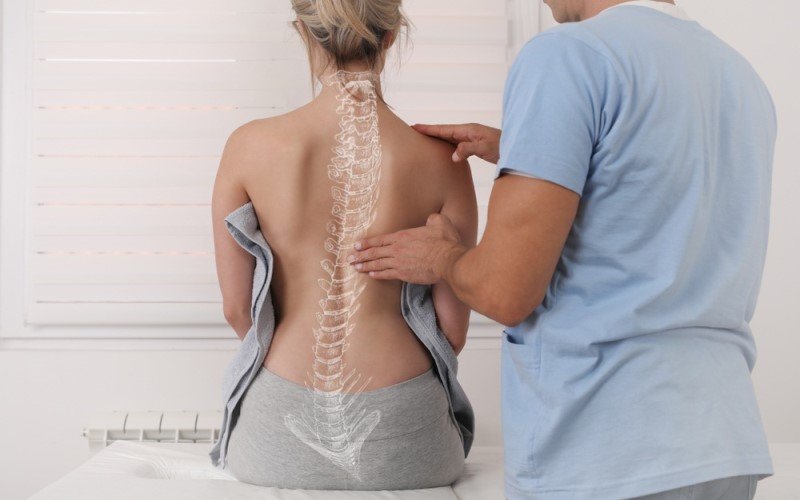Scoliosis, a condition characterised by an abnormal curvature of the spine, affects a significant portion of the population, including both adolescents and adults. It requires a multifaceted approach to treatment that often includes specialised care, self-screening strategies, and the use of assistive devices such as braces. For residents in Phoenix, Arizona, access to expert care and information about self-management techniques is essential for effectively dealing with this condition.
Seeking Professional Diagnosis and Treatment
Initially, the journey to managing scoliosis begins with obtaining an accurate diagnosis and professional consultation. It is crucial for patients to locate a scoliosis specialist in Phoenix, AZ, who can offer a comprehensive assessment of the condition and devise an appropriate treatment plan. These specialists are trained to deal with the intricacies of scoliosis and have experience in recommending surgical and non-surgical treatment options.
Finding a Qualified Scoliosis Specialist
To locate a credible scoliosis specialist, one can start by researching local clinics that focus on spinal disorders and orthopaedic care. Patients should look for medical centres that offer individualised treatment plans and have a team of professionals, including physicians, physical therapists, and orthotists who are well-versed in the latest scoliosis treatments. Moreover, credentials, patient reviews, and endorsements from established medical organisations can also guide someone seeking specialist care.
The Role of Scoliosis Screening and Self-Examination
Outside of professional healthcare settings, individuals should also be informed about how to check for scoliosis at home. Self-examination can be an invaluable tool for early detection, especially in regions where access to regular screenings may be limited. Understanding the visual and physical indicators of scoliosis, such as uneven shoulders, prominence of ribs on one side, or imbalances in the way clothing fits, allows individuals to monitor any changes and seek professional advice promptly.
Navigating Treatment Options
When a specialist confirms a scoliosis diagnosis, the discussion of treatment options becomes paramount. For young patients, especially those whose bones have not yet fully matured, observation and bracing are common approaches. Physical therapy and exercise programmes are also integral parts of treatment, helping to strengthen the muscles supporting the spine and potentially slowing the progression of the curvature.
Advancements in Non-Invasive Treatments
As technology advances, non-invasive treatments such as specialised scoliosis exercises and new bracing techniques are emerging. These advancements provide hope for many patients who wish to avoid surgery, and they underscore the importance of consulting a specialist who remains at the forefront of these developments.
When Surgery Might Be Considered
In cases of advanced scoliosis or when the curvature is causing significant issues, such as pain or organ dysfunction, surgery can be considered. Spinal fusion is the standard procedure to stabilise and straighten the spine, but it’s typically reserved for severe cases because of the inherent risks and extended recovery time.
Self-Care Strategies for Adults with Scoliosis
Although much emphasis is placed on treating scoliosis in young people, adults with the condition also require ongoing care. Adult scoliosis can be a continuation of adolescent scoliosis or can arise de novo due to aging and degeneration of the spine.
Bracing for Adult Scoliosis
Among the self-care strategies, bracing plays a pivotal role. An adult scoliosis brace is designed to provide support, relieve pain, and possibly prevent further curvature progression. Unlike braces for adolescents, which often aim to correct the curve, braces for adults focus on alleviating symptoms and improving quality of life.
Maintaining Physical Activity
Regular physical activity is also valuable for adults with scoliosis. Engaging in low-impact exercises, yoga, or Pilates can help maintain flexibility, improve posture, and reduce discomfort associated with scoliosis. Adults should consult with their scoliosis specialist to determine the safest and most effective exercises for their condition.
The Importance of Comprehensive Scoliosis Care
Ensuring a comprehensive approach to scoliosis care entails addressing the physical, psychological, and social impacts of the condition. Support groups, education on lifestyle adjustments, and mental health resources are vital components of comprehensive care that can help patients navigate their scoliosis journey more effectively.
Integrating Professional Care with Self-Management
While professional care is indispensable, integrating self-management practices into the treatment plan enables patients to take an active role in their health. Working closely with a healthcare team and utilising available resources helps bridge the gap between clinical treatment and everyday living with scoliosis.
Setting Realistic Goals and Expectations
Lastly, setting realistic goals and proper expectations is key to success. Scoliosis treatment is often a long-term commitment, and it is essential for patients and their families to understand what outcomes are achievable. Staying informed, maintaining regular consultations with healthcare providers, and being proactive in self-care can all contribute to effective scoliosis management.
In Phoenix, AZ, individuals have access to specialised scoliosis care and a wealth of resources to support them in managing their condition. By seeking expert help, using self-screening tools, and embracing self-care strategies such as bracing and exercise, patients with scoliosis can maintain an active, fulfilling life despite the challenges posed by the condition.
